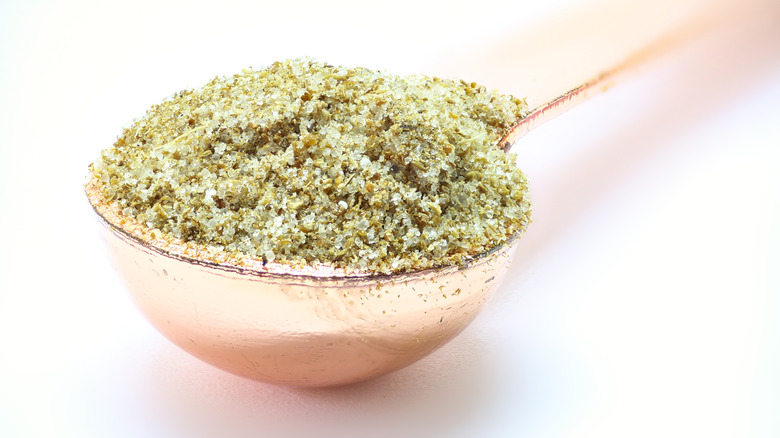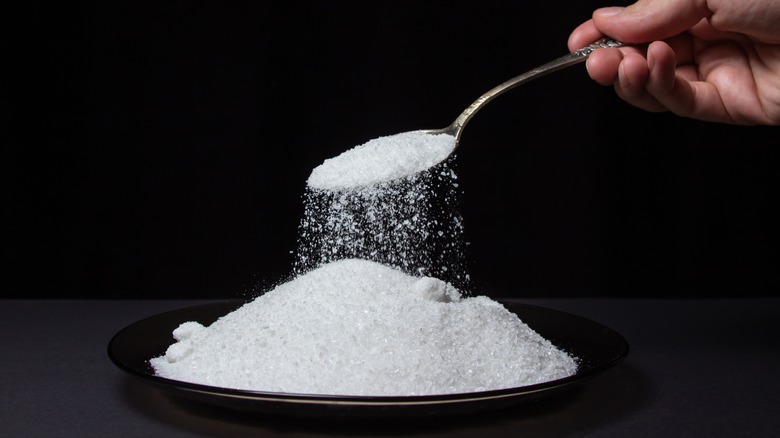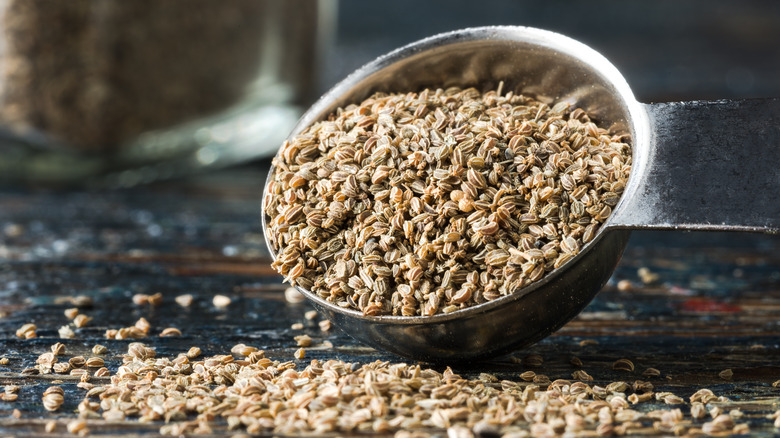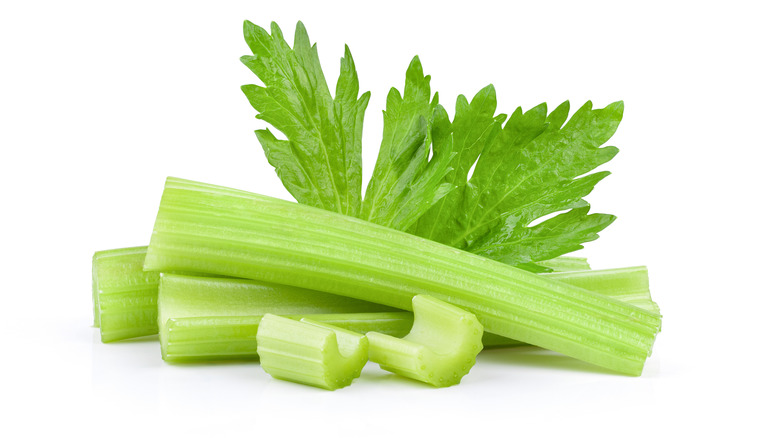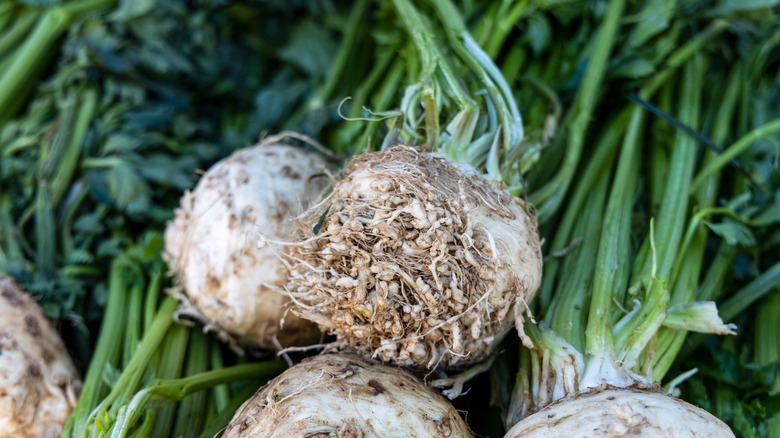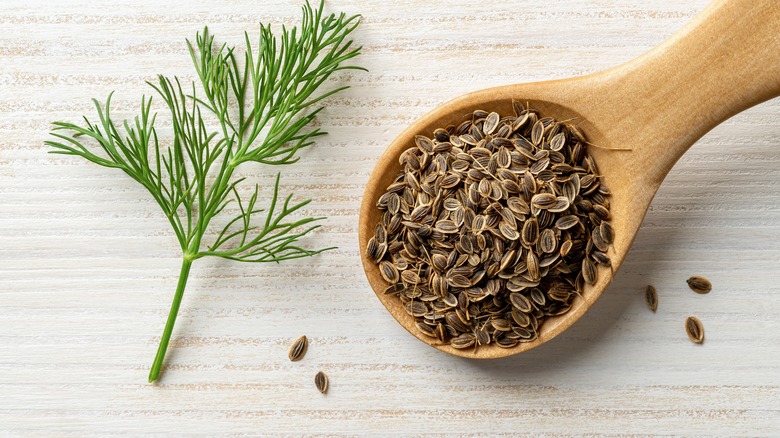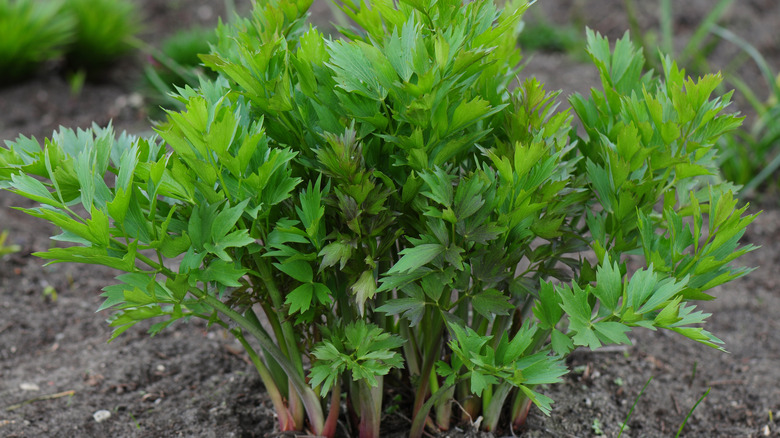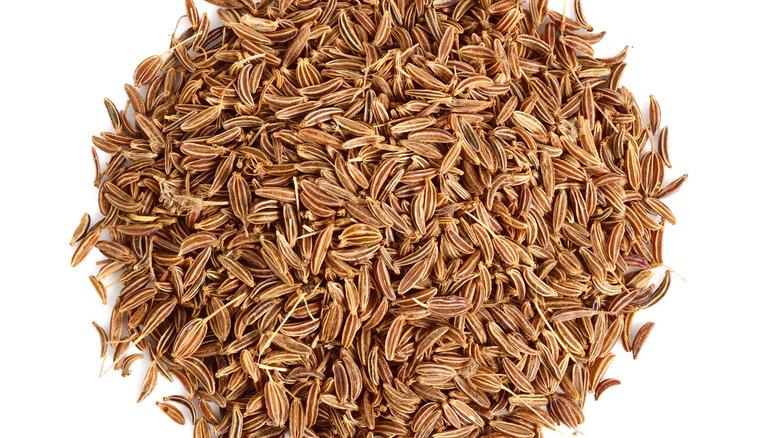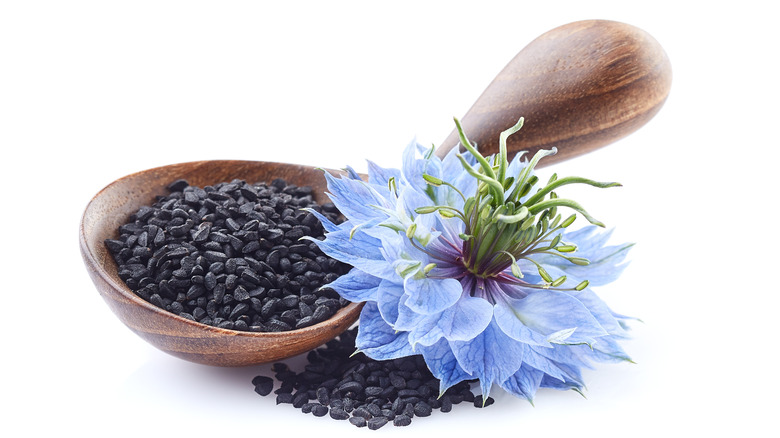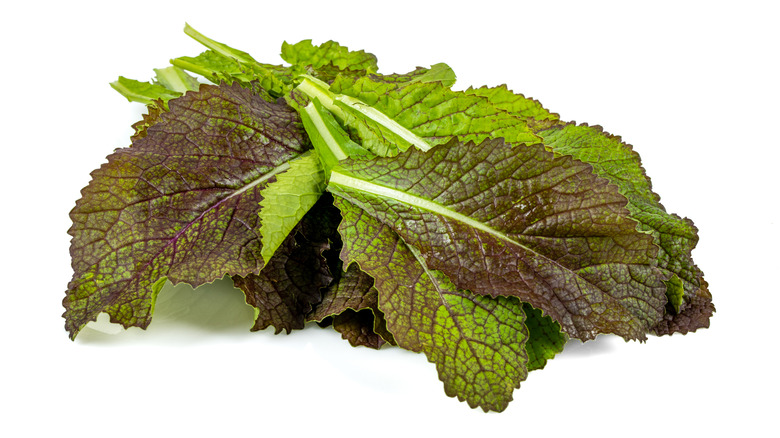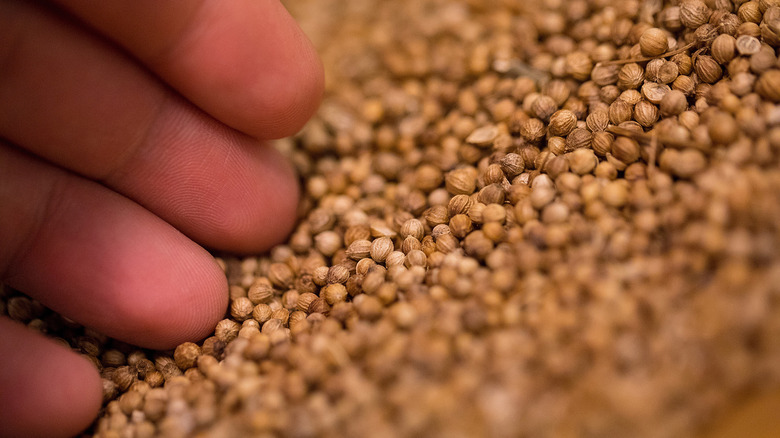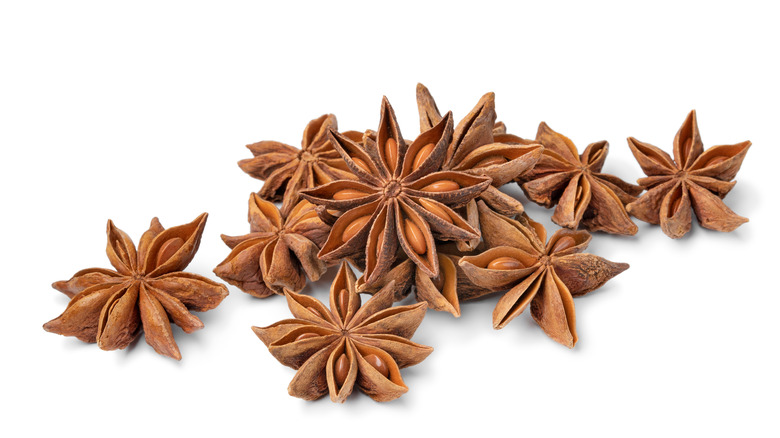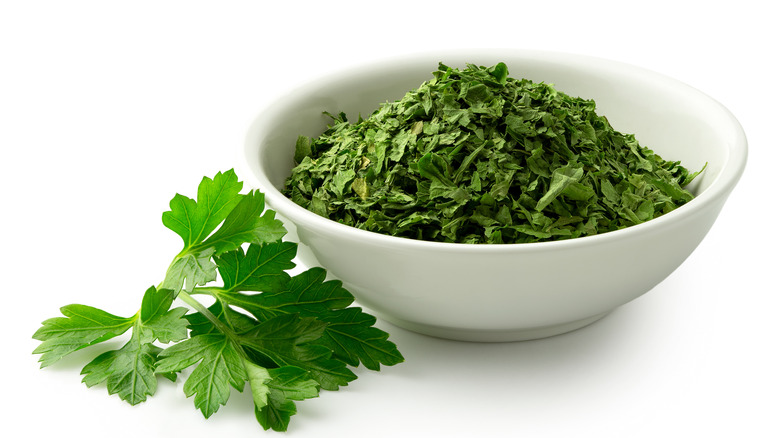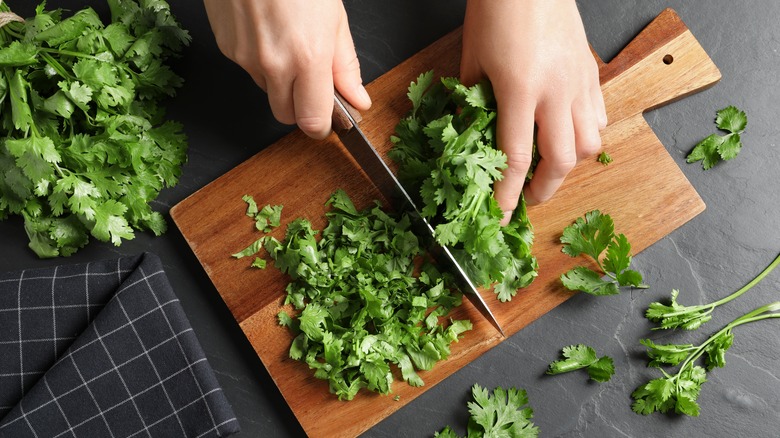15 Best Substitutes For Celery Salt
A staple in American cooking, celery salt is an ingredient that is often overlooked but has the power to enhance almost any dish and bring out the most subtle flavors. Whether you use it for Bloody Mary cocktails, sprinkle it over eggs, add it to a hot dog, or combine it with mayo for potato salads or coleslaw, almost everyone has a celery salt dish they remember with fondness.
Store-bought celery salt is made with one part dried celery leaves or ground celery seeds and two parts table salt. It can also contain nitrates or other preservatives. It has a salty, grassy, earthy flavor and sometimes a slightly bitter aftertaste. Celery salt is an excellent addition to many recipes and sometimes is part of some brand-name seasonings for which it ensures the base flavor. You can make your own celery salt using ground celery seed or dried celery leaves and salt, too. But if you don't have time for that and find yourself without any on hand, you might need another option. Check out these celery salt alternatives to see how you can replace the seasoning and enhance the taste of your home cooking.
Salt
As mentioned above, celery salt consists of a salt and celery seed combination, usually using twice as much salt as celery seed. In some cases, celery leaves or celery roots replace the seeds in store-bought combinations, and you can usually spot these as they have a milder celery flavor. Either way, the prevalent taste in celery salt is saltiness. The celery flavor is more of an aftertaste, so as far as substituting ingredients is concerned, salt is the first option.
One solution for when you find yourself cooking a recipe that requires celery salt without any on hand is to use salt as a substitute in the same amount as indicated. You will only miss the earthy aroma of celery, which only appears as a hint because the actual celery quantity you would be adding to your recipe is minimal. As different types of salt are available, make sure to adapt the salt variety to the cooking process. For example, use table salt for last-minute seasoning, kosher salt for seasoning before cooking, and sea salt when finishing a dish.
Celery seed and salt
Celery seed is the main flavor ingredient in celery salt, lending it a warm, bitter, and earthy aroma. Aside from its flavor, celery seed has an interesting nutrient profile, as it contains manganese, iron, and calcium, is low in calories, and has almost equal amounts of carbs, protein, and fat. According to Healthline, its composition makes it a valuable ally in promoting bone health and combating harmful bacteria. However, as a cooking ingredient, celery seed lends any food a unique flavor.
If your recipe calls for celery salt, it's an excellent idea to substitute it with celery seeds combined with salt. The substitution will result in an ingredient with a fresh, more intense flavor. First, grind or crush your celery seeds using a mortar and pestle and mix them with any salt you have available. When grinding the seeds, aim for a texture similar to the salt you will use so that the final product will be homogenous. To achieve the store-bought celery salt consistency and taste, use one teaspoon of celery for every two salt teaspoons.
Fresh celery
Fresh celery is another option you can use to substitute celery salt. It also brings the benefit of being a fresh vegetable with a substantial amount of nutrients and vitamins. In addition, the peppery flavor that characterizes celery will be more intense as it is fresh and add that specific crunch. Use these tips to keep your celery fresh for longer if you have fresh celery on hand but only plan on using it later.
When using fresh celery as a substitute, remember that it will render a different texture to your dish because, no matter how thinly you slice or dice it, you can't turn it into powder. The best way to obtain small celery pieces is to grate them, but this will still give you a different texture. So, use fresh celery as a substitute in those dishes where consistency is not so important, such as casseroles or stews. Also, don't forget to add the salt when you substitute, using one teaspoon of salt for every teaspoon of celery salt in the recipe. As for the fresh celery in the substitution, let your taste buds guide you.
Celeriac
Celeriac is a root vegetable with a similar taste to celery but a far different texture. It is also related to parsley and parsnips. According to Healthline, celeriac is loaded with nutrients and vitamins, packed with antioxidants, high in potassium and vitamin K, and filled with fiber. In addition, celeriac has a unique flavor profile, combining the earthy taste specific to root vegetables with the freshness that characterizes celery. When cooked, celeriac becomes sweeter, like most root vegetables.
This sorrel dip with celery salt recipe uses celeriac (or celery root) for making fresh celery salt. First, ½ cup of coarsely grated celery root is baked at 300 degrees Fahrenheit for half an hour, resulting in dry celery root flakes. After cooling, grind the flakes using a spice grinder with two tablespoons of flaky sea salt, resulting in a smooth powder with a wonderfully sweet, earthy, and salty taste. This seasoning is excellent when sprinkled over breakfast radishes and combined with a sorrel dip.
Dill seed
Dill seed represents the fruit of the dill herb, according to Spicesinc. With a flavor profile that highlights anise and caraway similarities, dill seed is somewhat related to celery seed as far as taste goes. Therefore, it is a suitable substitute when making your celery salt. The difference in flavor will be the slight sweetness of dill seed, which celery seed lacks. Interestingly, dill seed has a slightly different taste than dill weed, which is also suitable for replacing celery salt.
When replacing celery salt with dill seed, grind the seeds to release the volatile oils and the flavor. Mix one teaspoon of the ground dill seeds with two teaspoons of salt and add it to those recipes that call for celery salt in a 1:1 ratio. You can grind the dill and salt together so that the salt is infused with the volatile oils from the dill to get a smoother texture. Use dill seed as a celery salt substitute in sauces and soups, or sprinkle it on vegetables.
Dill weed
Dill weed has an earthy aroma reminiscent of lemon and caraway and a touch of herbal taste. The citrus flavor is more robust in dill weed than in dill seed, making the two parts of the same plant taste differently. However, dill weed is another suitable celery salt substitute, especially in its dry form. When dried, dill has a stronger flavor, which brings it closer to its herb family and makes it resemble celery and coriander more.
You can also use fresh dill herb to replace celery salt. Make sure to add more of the herb, as fresh dill has a softer flavor. Store the dill herb in the refrigerator if you want to keep it fresh for longer. Remember that if you decide to dry dill herb, you will enhance its aroma, as it is one of the herbs which doesn't retain a lot of moisture, so drying it will only extend its shelf life. Dill weed is an excellent celery salt substitute in salads and barbeque rubs, where flavors mix and the earthy, celery-like notes of the flavor are enhanced. Use a 1:1 substitution ratio, and make sure you don't forget to add salt.
Lovage
Lovage is a herb belonging to the same plant family as parsley and is a prevalent flavor in European cuisine. According to The Epicentre, lovage was used in Roman times as a food flavoring and medicinal herb. Lovage has a taste that resembles celery but is more intense, with hints of lemon, yeast, and anise. Lovage is consumed fresh, dried, frozen, or crystallized. The herb's flavor is suitable for soups, stews, and stocks that include meat, especially pork and chicken. Lovage also works well with potato dishes.
When substituting celery salt with lovage, use the green parts, such as the leaves and stalks or the seeds. The seeds have a flavor that resembles celery more closely, but the leaves and stalks come with the same aroma, although less intense. For the lovage salt mixture, use one part ground lovage seeds or greens and two parts salt. Regarding ratios, choose a direct swap and use the same lovage salt quantity as the required celery salt in the recipe.
Caraway
Caraway is another seed that can easily step in as a replacement for celery salt. It is related to fennel and cumin, but its flavor is slightly different, with notes of pepper and, interestingly, citrus. Caraway can seem to have a somewhat aggressive flavor, but usually, this is only the first impression, as the taste changes. According to NPR, caraway is mentioned in many European (mainly German) recipes from the 18th century, so it is a flavor that characterizes parts of Western European cuisine.
Caraway can replace celery salt, as the two spices have the same earthy accents. However, caraway is sweeter than celery, so it will also change the flavor of your dish, and take it on the sweeter side. To avoid this, use less caraway than the required quantity of celery salt. Instead, grind together one teaspoon of caraway seeds and two teaspoons of salt to make caraway salt. Caraway goes well with cabbage, pork, garlic, and curries.
Fennel seed
Fennel seeds come from different varieties of the fennel plant and are considered a very flavorful spice. The aroma resembles anise and licorice, with a warm and sweet flavor profile. However, fennel seeds are sweeter than anise and have an earthy quality which they share with celery seeds. A great tip for cooking with fennel seeds is to chop them instead of grinding or using a mortar and pestle, as this will help release the oils responsible for the aroma.
When substituting celery salt with fennel seed, it's necessary to grind it to obtain the required smooth consistency. Fennel has a rather sweet taste and crushing it will take out some of the flavors, which will help make fennel salt more similar to celery salt. To make the seasoning, grind together two parts salt and one part fennel seeds. Use the seasoning in Italian dishes or as a meat rub, but avoid adding it to Bloody Mary cocktails because the sweetness of fennel can alter the cocktail for the worse.
Nigella seeds
Nigella seeds, also known as black cumin, have a flavor similar to oregano. Their scent is weak, but the taste has herbal notes and resembles cumin, nuts, and onion. These similarities make nigella seed a good substitute for celery salt. According to Spiceography, nigella seeds were found in the pharaoh Tutankhamun's tomb, meaning they have been used for thousands of years. A number of ancient cultures used the seeds for medicinal purposes as well as a spice for different dishes. For example, they can be a naan bread topping in Indian cuisine, a substitute for caraway seeds in Jewish recipes, or in a recipe for a Lebanese string cheese called majdoul.
As a substitute for celery salt, nigella seed is a flavor enhancer because of its strong flavor and nutty taste. The peppery notes and the slight bitterness make nigella seeds similar to celery seeds, so they can easily replace celery salt. The substitution ratio for recipes is the same, with equal parts used for the replacement. Nigella seeds go well with savory dishes, such as curries, lentils, or squash recipes.
Mustard greens
Mustard greens are the leafy part of the mustard plant and belong to the same genus of vegetables as kale, broccoli, and cauliflower (via Healthline). They have a bitter and spicy flavor with a hint of pepper and many health benefits. They are similar to collard greens but differ in categorization, as mustard greens are considered a herb, and collard greens are closer related to cabbage and kale. Mustard greens are a great source of antioxidants and a good source of vitamin K.
The bitter and peppery flavor of mustard greens is reminiscent of celery, so mustard greens are an excellent substitute for celery salt. To use mustard greens as a substitute, chop them finely and add them while the dish is cooking. The recommended ratio for this substitution is one and a half parts mustard greens per one part celery salt, as the latter has a more robust flavor than the former. Plus, you will need to add more salt, as mustard greens lack the salt that is usually part of the original condiment.
Coriander seeds
Coriander seeds are the dried-up fruits of the cilantro plant and partly share a flavor profile with cilantro. But whereas cilantro has a strong flavor which some people reject entirely, coriander seeds have a citrusy-sweet aroma. Their flavor is enhanced when they are dry-toasted and becomes sweeter and more earthy. From this perspective, coriander seeds have a slight resemblance to celery seeds. Buy your spices whole and grind coriander seeds as you need for specific recipes because ground coriander loses its flavor faster than other spices.
When you substitute celery salt with coriander seed, use it in dishes that appeal to coriander's warm and nutty flavor or the crunchy texture similar to celery seed. Replace each teaspoon of celery seed the recipe calls for with a teaspoon of coriander seed. Use coriander to replace celery seed in pickles, curries, stews, and spice mixes, where the subtle flavor can shine. Coriander taste also goes well with salads, soups, and stir-fries.
Star anise pod
Star anise is a spice originating from China and is widely used in Chinese cooking and some European recipes (via Spiceography). It has an interesting shape, as an eight-arm pod, and each part encapsulates a seed. Star anise has a flavor similar to fennel and anise seed, but on the stronger side, with licorice dominating the tastebuds. Its aroma intensifies when cooked, so be careful to add only a small quantity of spice so your dish doesn't turn bitter.
The spicy, sweet, and licorice-like flavor of star anise makes it a suitable substitute for celery salt. However, be mindful that star anise can only be used in its ground form as a celery salt substitute, as the flavor is too strong to use it whole. Instead, grind the spice and combine one teaspoon with two teaspoons of salt to obtain a celery salt substitute. You can use this in any recipe that requires celery salt with a 1:1 substitution ratio. Star anise goes well in stews, soups, and broths used for braising.
Dried parsley
Parsley is an herb widely used in European cooking in fresh and dried forms. Its mild and somewhat bitter flavor goes well in many recipes, as it compliments both meat and vegetable dishes with a pleasant, finishing aroma. According to Healthline, parsley is also rich in vitamins K, A, and C. When dried, parsley has a more intense flavor, bringing it closer to the warm and earthy aroma that characterizes celery. It also has more antioxidants than its fresh version, making it a versatile herb.
As dried parsley leaves are closer to the celery seed aroma than fresh parsley, the dried version is more suitable to substitute celery salt. Mix one teaspoon of dried parsley with two teaspoons of salt to make parsley salt. You can substitute this in any recipe that requires celery salt in a 1:1 ratio. Replacing celery salt with parsley salt will give your dish an enhanced earthy flavor and lose some sweet notes from celery.
Cilantro
A member of the parsley family with a particular taste, cilantro is a representative herb in various cuisines, from Latin America to India and Asia. In addition, cilantro is one of the oldest herbs used by humans, with proofs of its existence that date back 8,000 years (via Spiceography). Interestingly enough, cilantro is also one of the herbs humans perceive very differently. For example, some individuals have a particular gene that makes them perceive aldehydes (a compound usually found in soap) as stronger than others, so they will feel that cilantro tastes like soap because of genetics.
The herb has a bright, fresh taste and even a citrusy note for those lacking the aldehyde-enhancing gene. In addition, the taste of dried cilantro is close to dried parsley, making it a suitable substitute for celery salt, as they have similar earthy tones. To substitute, mix 1 teaspoon of dried cilantro leaves with 2 teaspoons of salt and use it like you would use celery salt in your recipe. Avoid combining cilantro with rosemary, thyme, nutmeg, anise, fennel, coffee, and red wine. Otherwise, you can substitute the cilantro-salt combination in any celery salt recipe.
